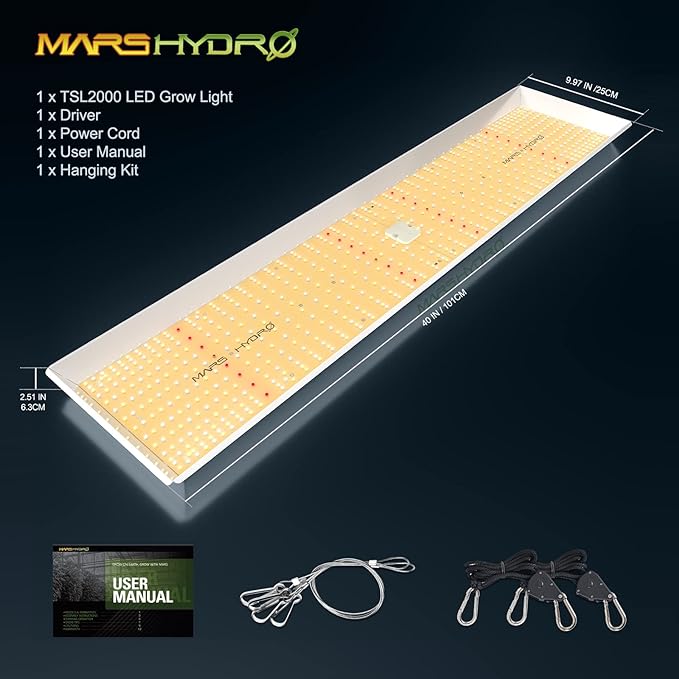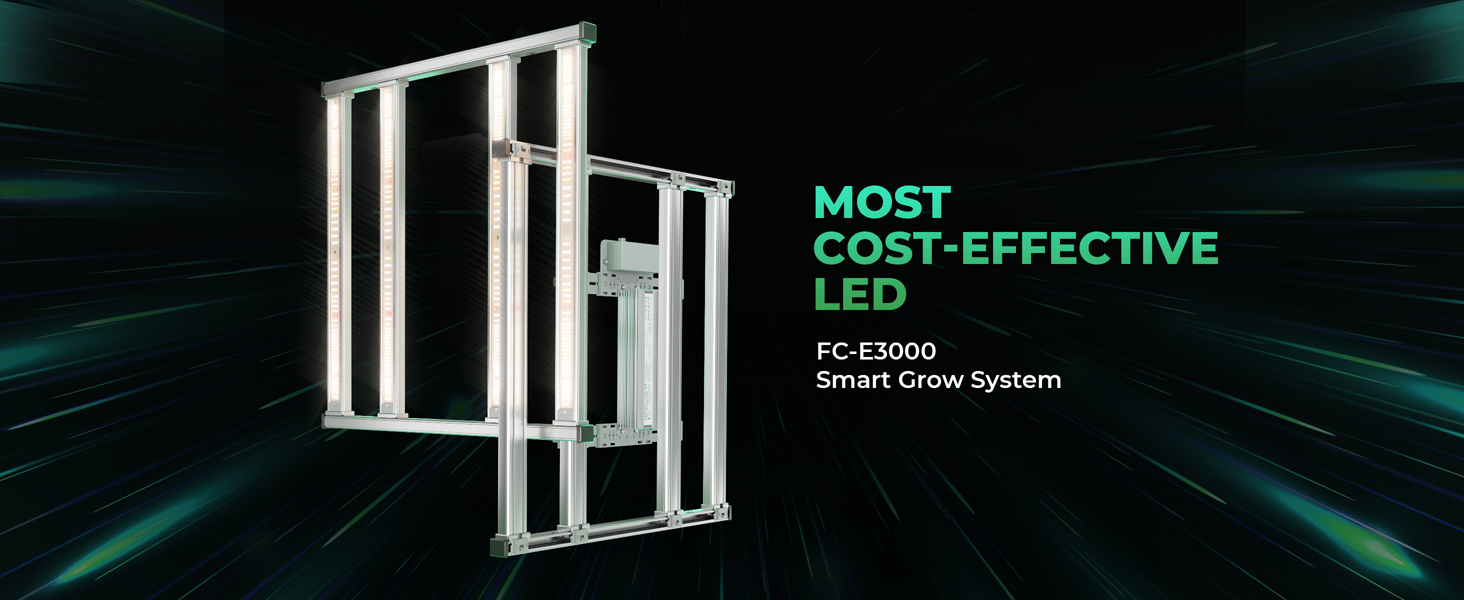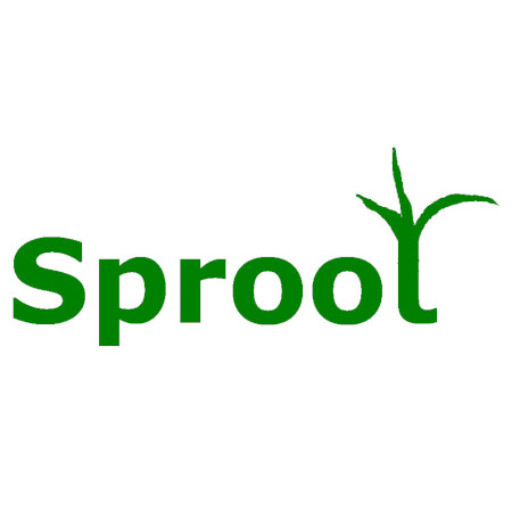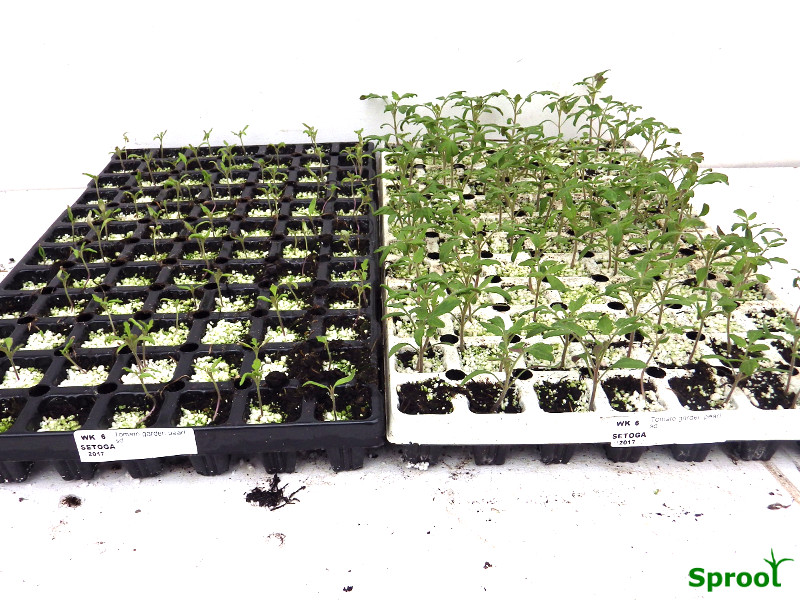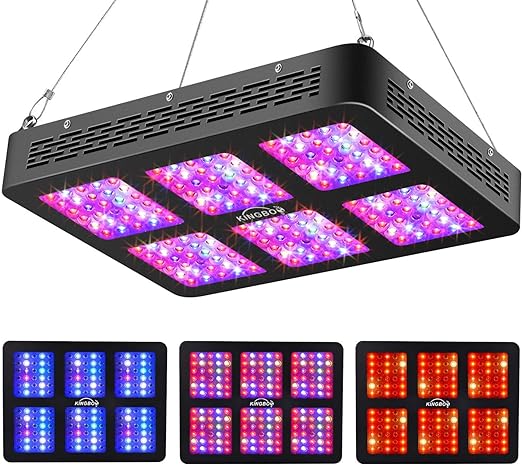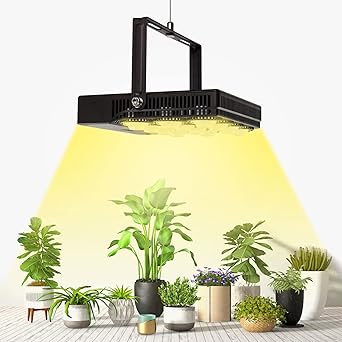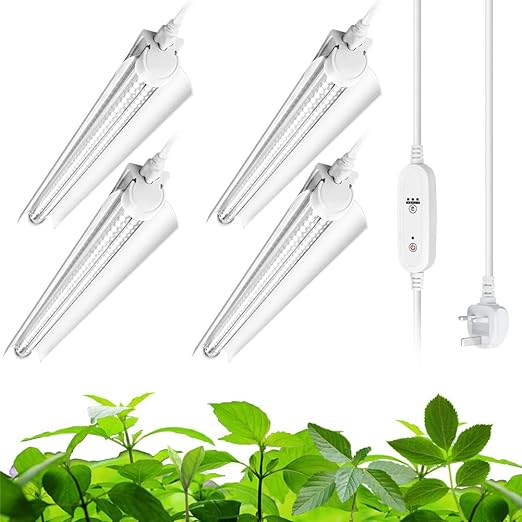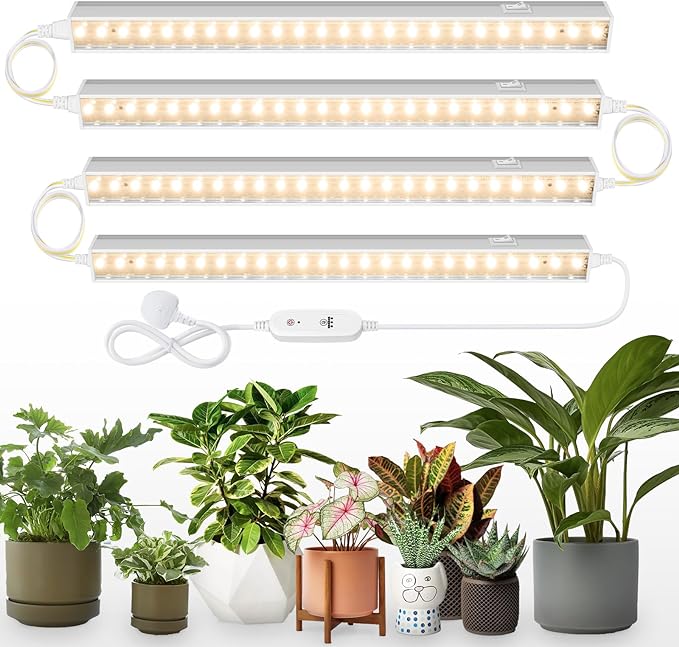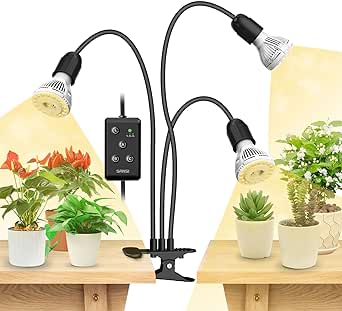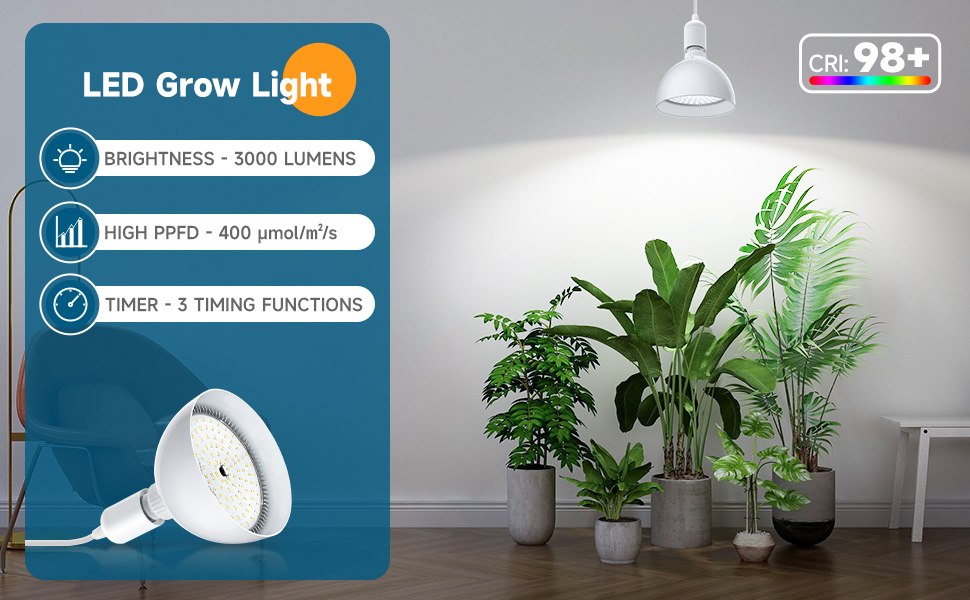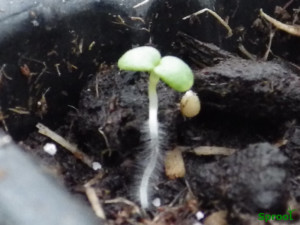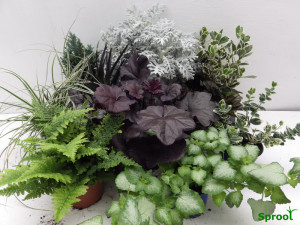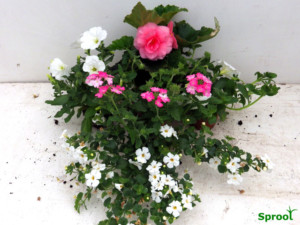How to see the wood from the trees
How to buy and compare different led lights
There are 3 main ways of comparing them:
- 1 How much light does it produce.
Avoid the headline figures a lamp may be described as 100 or 200 watt, it means nothing, its a measure of energy not light.
Look for the amount of light that they produce for the amount of electrical energy that they use. This is measured in µmols / Joule and is sometimes called the efficiency. You might find this specification difficult to find.
You should try to find the system output, the PPFD figure, again this is often not mentioned.
What is PPFD, in simple terms it is a measurement of brightness but based on the spectrum the plant uses not the human eye. A good PPFD level to look for is 500-1000.
A normal summer sunny day would give a PPFD reading of 1300
Just remember, the LED wattage draw is a input, and you should care about the system output, A quick way to check is the wattage draw versus total LEDs .
You might find a 300 LED light might draw 100 watt but a 90 LED light might draw 200 watt, the difference is the quality of the LED diode.
For instance a top of the range fitting with higher efficiency 2.7 umol/J, Samsung diodes might have, 600 diodes only using 200 watt producing a PPFD of 1000. - 2 light spectrum,
What mix of light do they put out, a full spectrum LED grow light is important. You’ll need red & blue light, but also infrared and ultraviolet, depending on the growth stage, White light is not as important to plants.
If anybody tells you they have the correct light spectrum beware, the science of manipulating the spectrum is evolving and each plant has different requirements and it varies as they grow. - 3 Coverage
The evenness of the light footprint over the area that they have been designed to cover, Each light has a maximum range of space that it can cover, most LED lights have a narrow angle, make sure you read reviews and feedback from others on the actual space that the LED light can cover, sometimes, products are not as advertised !!
The PPDF is often measured in the middle and is the maximum, the average is lower, a 1000 PPDF may give a 700 average. The available PPDF changes as you move the light closer or further away.
Perhaps the 4th comparison should be brand or longevity.
Brand or Budget.
You usually get what you pay for, corners can be cut, the actual LED quality varies, look at the design of the fitting or wiring, overheating is possible, some have fans, other’s have metal heat sinks. Running hot will reduce the efficiency of the LED, reducing output.
Most of the time the difference in price is down to the quality of the LED. LM80 is a quality standard test and is a good sign.
A good brand that has raving customer reviews, is almost always, a sure bet. Your other friend is the cannabis growers who have been using lights in secret for a long time.
Choose the light that is best for what you want.
Seedlings need a high level of light, so go for lots of LEDs neatly arranged, concentrating the light, this will give the recommended level of light. you need a PPFD figure of 200 and above, less if they can have some sunlight as well
But seedling lamps are ugly so if you only want to improve your house plants,a smaller attractive lamp unit, that can be adjusted may be all you need.
Most lights don’t have the full spectrum and work best if used along with natural sunlight.
Timers are a useful feature you’ll want to ensure that your plants receive the correct day length. As a rule of thumb a minimum of 6 hours of light.
Seedling Phase: up to 18 hours on, 6 hours off
Summer plants under 12 hrs for growth more than 12 hrs for flowers
Winter plants (not many, poinsettias mainly but also some kalanchoe) less than 11 hrs of light.
Give the plants the correct light recipe
light level give your plants the right amount of light, seedlings need maximum light but house plants are happy with less.
Spectrum this can be crop-specific, seedlings, growth and flowering they all have different needs. Generally, you must have red and blue, but look for infrared and sometimes UV. White is mainly to help you see what is going on.
Uniformity the layout of the LEDs is important to give a uniform spread of light, remember most LEDSs have a narrow spread of light.
Time how long the light is on for (the day length) this will affect plant growth, it can make plants flower early or delay flowering.
Some suggested best buy LEDs
The market is changing all the time so I have concentrated on brands, good designs and useful features.
Top of the range grower type lights
Tend to have better quality LED diodes (Samsung are top-notch) the fitting is designed to give uniform light, with some form of cooling, many are designed to be extended. Generally, they are cheaper to run.
checklist
- LED count Look for 2-300 LEDs for small areas or 600 plus for large areas
- Light spectrum a good mix of colours, infra red and UV.
- High PPDF figure, 1000 and above is common.
- Timers to control day length
- Dimmers are common.
- Silent running by better design.
Mid range range grow lights
Smaller in size and price, often a compromise, lower-quality LEDs, heavy on blue and red, sometimes infrared and UV is missing. Heat is also a problem many use quiet fans to disperse heat, a lot of reviews mention noisy fans.
Lights with a 400-500 PPDF figure are common.
- LED count Look for 1-200 LEDs for small areas some times more
- Light spectrum a good mix of colours, see if infra red and UV is included
- medium PPDF figure, 3-500 is common.
- Timers to control day length
- Dimmers sometimes.
- Tend to overheat see if a fan is included, can be noisy.
You will also find grow lights that look like old fluorescence tubes, these can be a good cost-effective alternative, as manufacturers have geared up to offer replacements for inefficient fluorescence tubes. T5 is a standard tube size.
Small grow lights
Perhaps better suited to House plants or small pots of seedlings. They often have flexible mounts so you can direct the light, some people are put off by the blue-purple light, but you could use them during the night instead. The specifications are difficult to find, I think brand and reviews are your best way to choose.
Often Luminous flux is mentioned but it is the measure of the perceived power of light by the human eye, not plants, ideally, we want a PPDF amount. A lot of lamps have low PPDF figures, under 100 is common.
- LED count Look for the number of LED’s you need enough to provide growth anything under 50 with need sunlight as well.
- Light spectrum a good mix of colours, infra red may bot be included
- Low PPDF figure, 50-100 is common.
- Timers to control day length
- Dimmers sometimes.
- Tend to overhead see if a fan is included, can be noisy. Some have built in heat sinks to disperse heat.
Grow bulbs are easy to buy and they fit existing sockets, they will get hot look for some design features, metal heat sinks or fancy ceramic holders. As a rough guide, a 24-watt bulb would produce 32 PDFF at 1 metre but goes up to 129 at 45 cm, this is not enough to replace sunlight but good to help plants in a shady spot.
Some brands to look out for
Kingbo
KINGBO & GARPSEN lights and the KINGBO brand in general, it is worth mentioning they have high levels of customer service and this is one of the major reasons why their review ratings are so high. KINGBO lights are designed and manufactured by the China-based Shenzhen Guangpushang Network Technology Company, which makes a few different lines of LED grow lights under the GARPSEN & KINGBO brand.
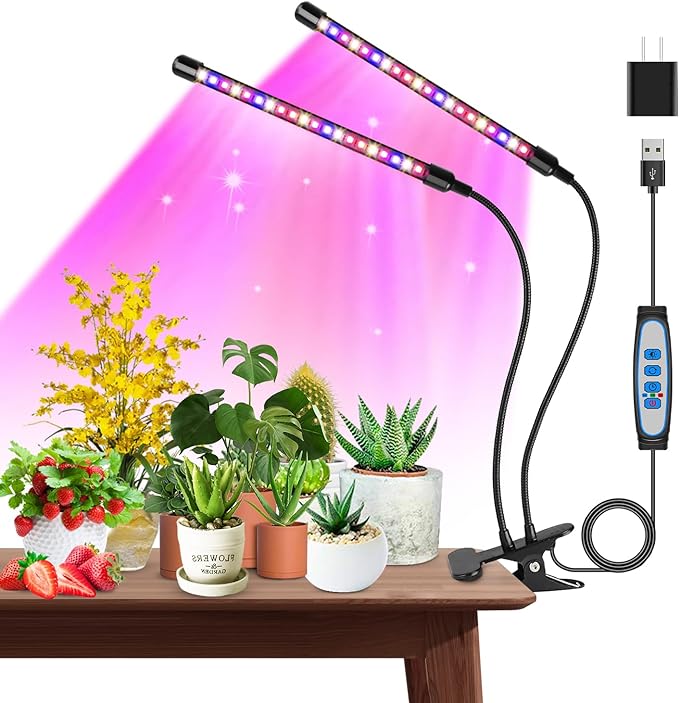
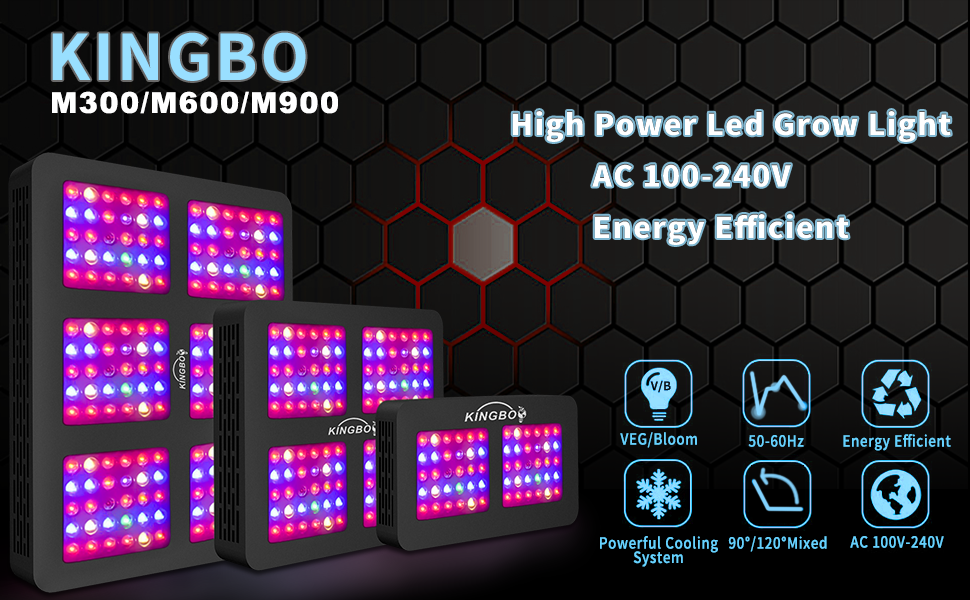
Viparspectra
The VIPARSPECTRA grow lights have 5W LED grow bulbs of a decent quality (bridgelux a USA company and Taiwanese company Epileds technologies) The VIPARSPECTRA brand itself is owned by the Chinese company, Shenzhen Bailuo Technology, that primarily specialises in selling LED lighting.

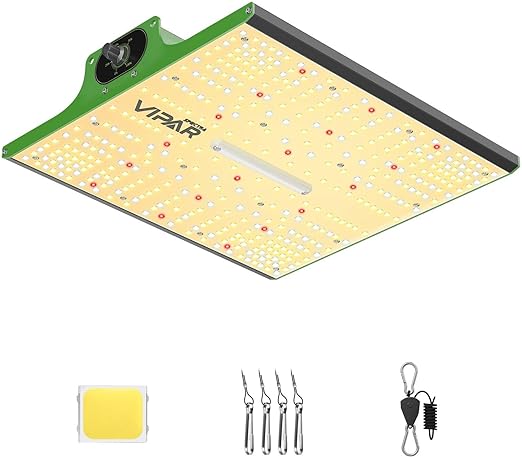

SANSI
SANSI Technology: A Global Leader in LED Displays and Lighting. Since its founding in 1993, SANSI has been dedicated to technological innovation in a wide range of LED applications, from commercial displays to home lighting. They fully integrate product design, production, sales, installation, and customer support in an effort to provide affordable, state-of-the-art LED technology.
With over 480 in-house engineers, 2000 employees, and three advanced factories, SANSI has reached over 40 nations on five continents and continues to grow. Having successfully launched dozens of cutting-edge projects, SANSI’s mission is to raise the bar for LED applications.

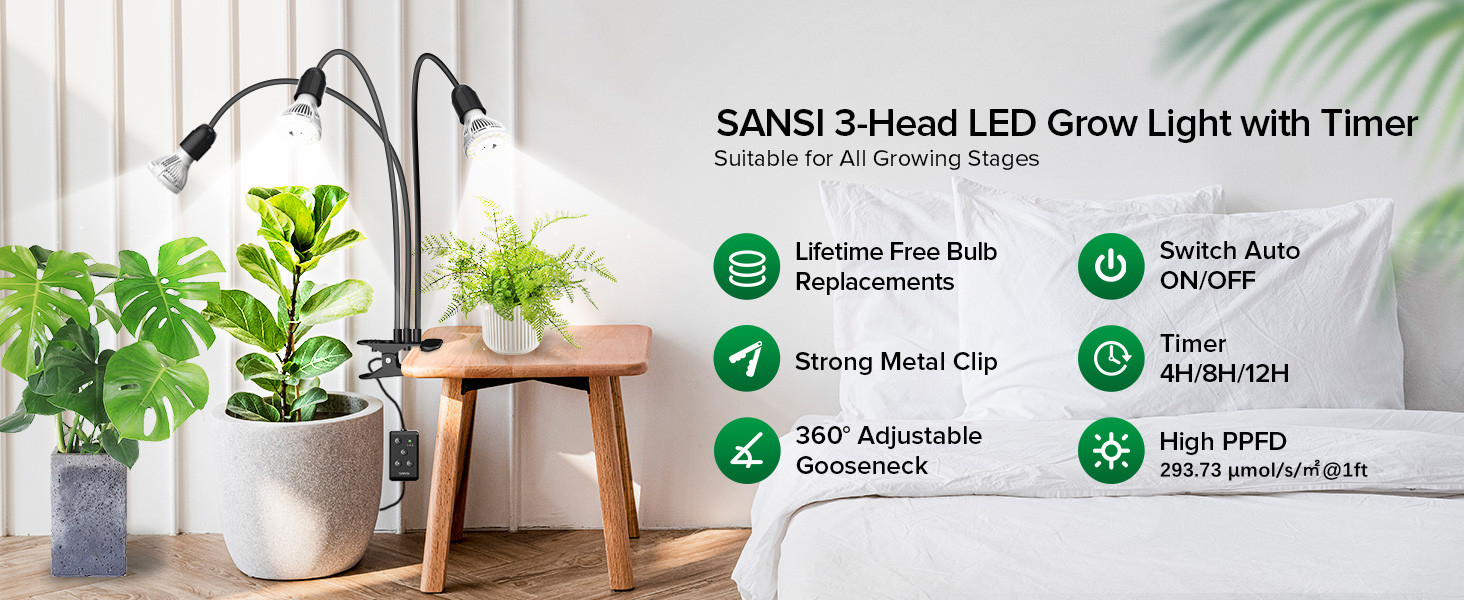
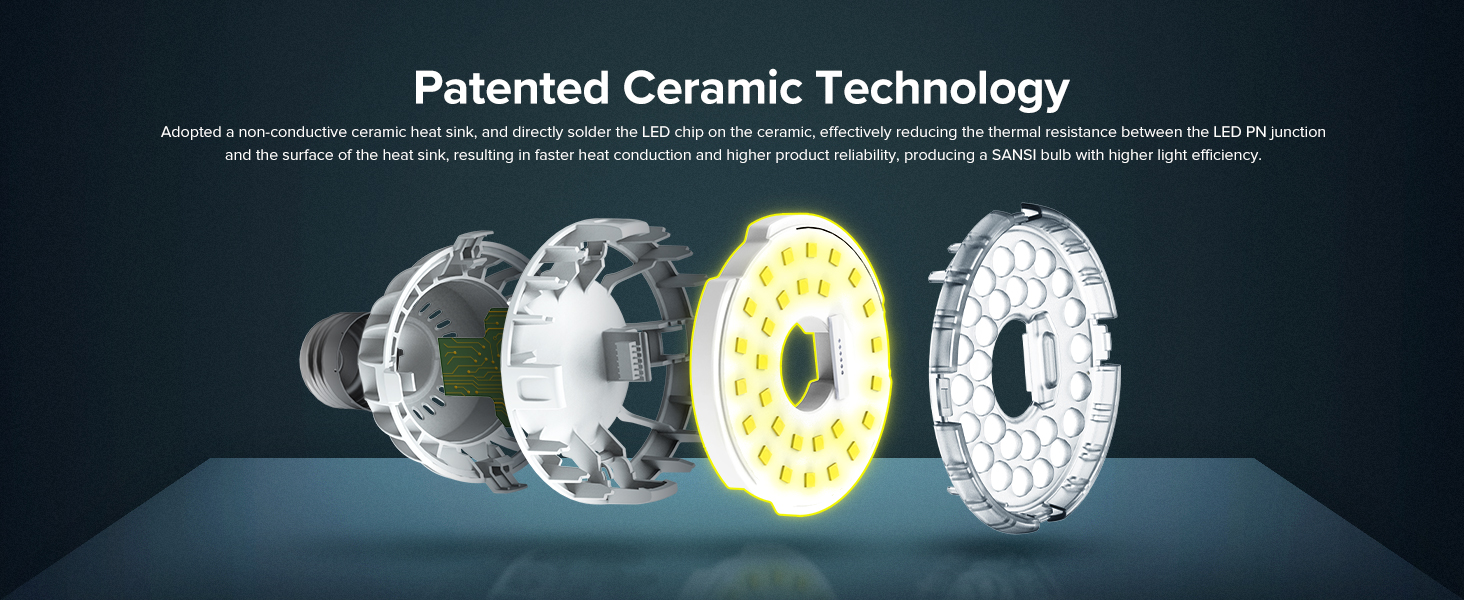
Mars Hydro
The Mars Hydro brand belongs to a Chinese manufacturer called LG-LED Solutions Ltd based in Shenzhen. Mars Hydro has stock in the UK (and Europe), which avoids the unpredictability of international travel, and delivery times are the same as with any other UK-based product.

